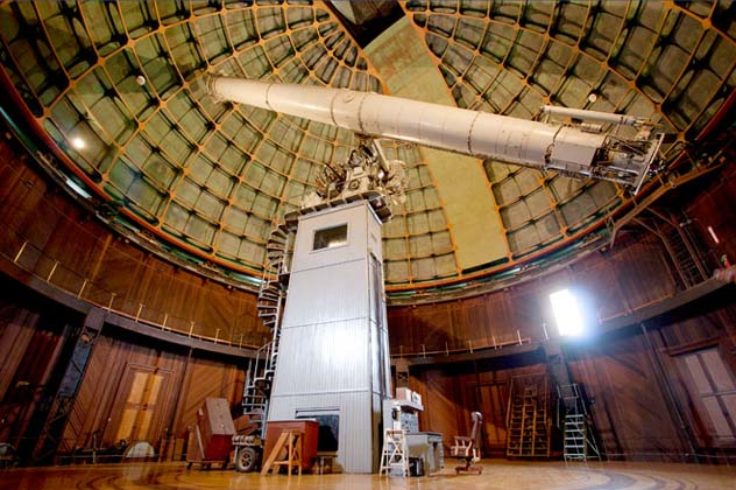History of Refracting Telescope
The history of refracting telescope goes back to 1608 when German-Dutch eyeglass maker Hans Lippershey unsuccessfully attempted to patent one. He is most often associated with the invention of the telescope. However, the first successful refracting telescope came in 1609 when Italian astronomer, physicist, and engineer Galileo Galilei constructed a version on his own and made remarkable astronomical discoveries. German astronomer and mathematician Johannes Kepler made some modifications to Galileo’s design and contributed immensely to the field of optics.
Examples of Refracting Telescopes
Many large refracting telescopes have been constructed throughout history. Some notable examples are Lick Observatory, Lowell Observatory, Archenhold Observatory, Royal Greenwich Observatory, Nice Observatory, and Yerkes Observatory, which houses the largest refracting telescope in the world. Image Courtesy: Skyandtelescope.org
ObjectiveEyepieceFinderscopeOptical tubeApertureFocuserMount
There are two main designs of refracting telescope – Galilean Telescope and Keplerian Telescope. The distance between the objective and the eyepiece is the sum of their focal lengths. The magnification of a refracting telescope is equal to the focal length of the objective divided by the focal length of the eyepiece. The brightness of an image depends partially on the amount of light collected by the telescope, which is directly proportional to the area of the objective lens.
Size and Cost
They can be heavy, especially if the aperture is large, which requires large and heavy lenses. They can also have a more elongated body due to the long focal length of the objective lens, which can be a challenge for transportation, storage, maintenance, and cleaning. They may be quite expensive, as large high-quality lenses are more costly to produce.

